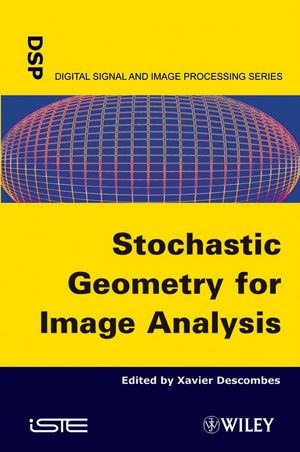
Stochastic Geometry for Image Analysis
ISTE Ltd and John Wiley & Sons Inc (Verlag)
978-1-84821-240-4 (ISBN)
- Titel z.Zt. nicht lieferbar
- Versandkostenfrei innerhalb Deutschlands
- Auch auf Rechnung
- Verfügbarkeit in der Filiale vor Ort prüfen
- Artikel merken
This book develops the stochastic geometry framework for image analysis purpose. Two main frameworks are described: marked point process and random closed sets models. We derive the main issues for defining an appropriate model. The algorithms for sampling and optimizing the models as well as for estimating parameters are reviewed. Numerous applications, covering remote sensing images, biological and medical imaging, are detailed. This book provides all the necessary tools for developing an image analysis application based on modern stochastic modeling.
Xavier Descombes, Director of Research INRIA, EPI Ariana
Chapter 1. Introduction 1
X. DESCOMBES
Chapter 2. Marked Point Processes for Object Detection 11
X. DESCOMBES
2.1. Principal definitions 11
2.2. Density of a point process 15
2.3. Marked point processes 21
2.4. Point processes and image analysis 22
Chapter 3. Random Sets for Texture Analysis 29
C. LANTUÉJOUL and M. SCHMITT
3.1. Introduction 29
3.2. Random sets 33
3.3. Some geostatistical aspects 42
3.4. Some morphological aspects 51
3.5. Appendix: demonstration of Miles’ formulae for the Boolean model 61
Chapter 4. Simulation and Optimization 65
F. LAFARGE, X. DESCOMBES, E. ZHIZHINA and R. MINLOS
4.1. Discrete simulations: Markov chain Monte Carlo algorithms 66
4.2. Continuous simulations 91
4.3. Mixed simulations 105
4.4. Simulated annealing 106
Chapter 5. Parametric Inference for Marked Point Processes in Image Analysis 113
R. STOICA, F. CHATELAIN and M. SIGELLE
5.1. Introduction 113
5.2. First question: what and where are the objects in the image? 117
5.3. Second question: what are the parameters of the point process that models the objects observed in the image? 129
5.4. Conclusion and perspectives 158
5.5. Acknowledgments 159
Chapter 6. How to Set Up a Point Process? 161
X. DESCOMBES
6.1. From disks to polygons, via a discussion of segments 162
6.2. From no overlap to alignment 167
6.3. From the likelihood to a hypothesis test 172
6.4. From Metropolis–Hastings to multiple births and deaths 176
Chapter 7. Population Counting 179
X. DESCOMBES
7.1. Detection of Virchow–Robin spaces 180
7.2. Evaluation of forestry resources 192
7.3. Counting a population of flamingos 207
7.4. Counting the boats at a port 229
Chapter 8. Structure Extraction 249
F. LAFARGE and X. DESCOMBES
8.1. Detection of the road network 250
8.2. Extraction of building footprints 262
8.3. Representation of natural textures 269
Chapter 9. Shape Recognition 287
F. LAFARGE and C. MALLET
9.1. Modeling of a LIDAR signal 287
9.2. 3D reconstruction of buildings 308
Bibliography 325
List of Authors 341
Index 343
| Verlagsort | London |
|---|---|
| Sprache | englisch |
| Maße | 163 x 240 mm |
| Gewicht | 671 g |
| Themenwelt | Technik ► Elektrotechnik / Energietechnik |
| ISBN-10 | 1-84821-240-2 / 1848212402 |
| ISBN-13 | 978-1-84821-240-4 / 9781848212404 |
| Zustand | Neuware |
| Haben Sie eine Frage zum Produkt? |
aus dem Bereich


